This past week, May 2nd through May 8th, my first adult monarch butterflies emerged from their chrysalises. The eggs had been laid in early April. The larvae developed through 5 caterpillar stages, called instars, through the middle of April. The caterpillars then formed a chrysalis and hung for about 10 days. As you might recall, I was hoping to raise and release 240 monarchs this spring. This week, I released 36.
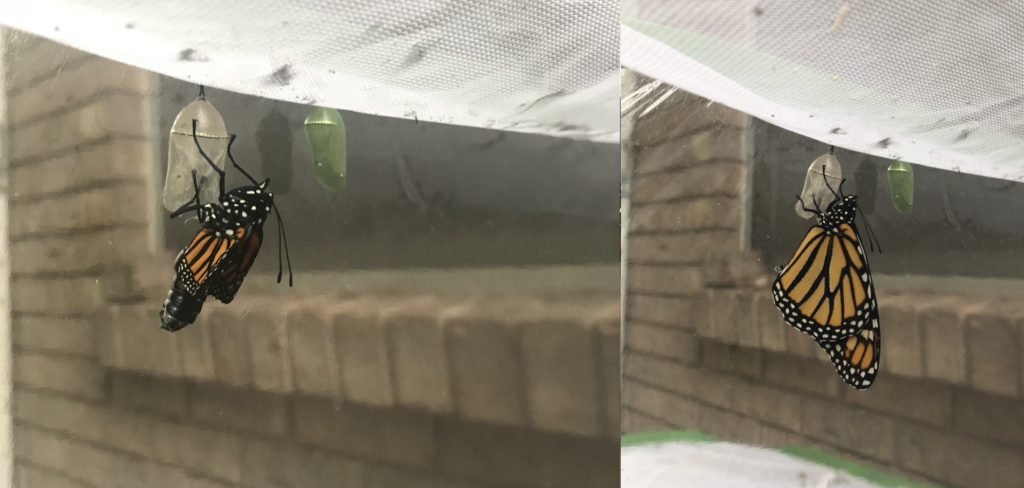
A monarch butterfly immediately after emerging from its chrysalis, then a minute or so later when it had most inflated its wings. You can see the distended, fluid-filled abdomen in the first pic. The butterfly rhythmically squeezes the liquid from this into the veins on its wings to inflate them.
If I could release 36 more each week for the next 6 weeks, I would hit my goal. Unfortunately, after the first few female monarchs laid eggs in my garden, I quit getting visits. As I detailed in this post, our weather was cold and additionally the number of monarchs this year are down. I did have another female visit this past weekend, so I should have caterpillars from her soon. However, I have yet to see any.

Butterflies hanging in my enclosure. After emerging from their chrysalises — or eclosing, in the lingo — the monarchs must let their wings dry before they can fly. Their wings are too heavy when they are still wet.
In Central Texas, “monarch season” usually lasts from early April through mid-June, so I still have time. And the garden is in great shape — lots of milkweeds and plenty of other native perennials blooming. But, the clock is ticking.
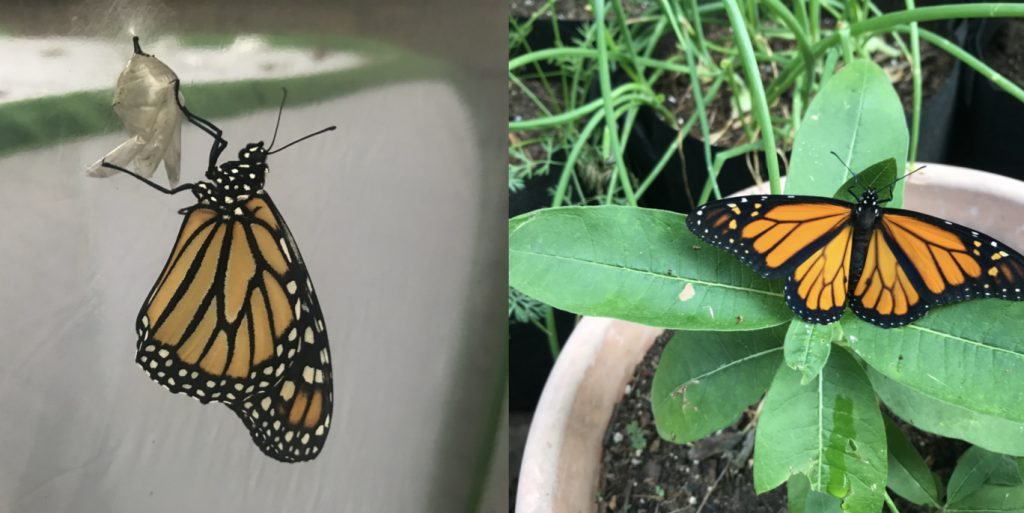
Two of the 36 monarch butterflies I released. Note how vivid the colors are on the upper wing just after eclosing. This coloration fades over time.





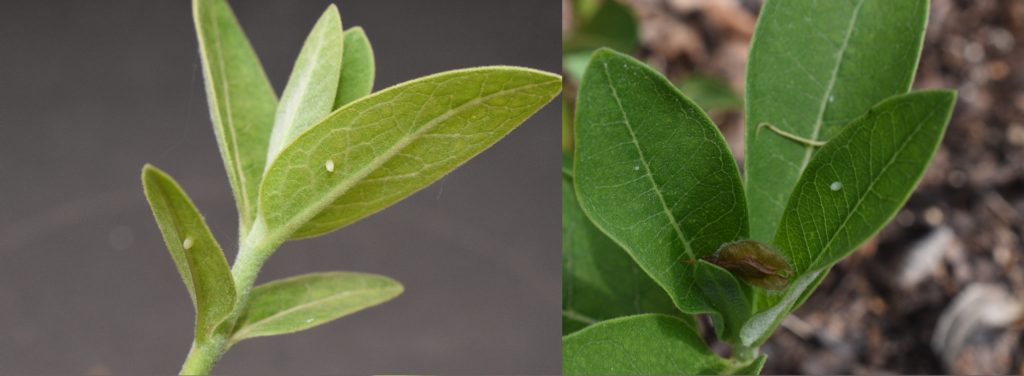

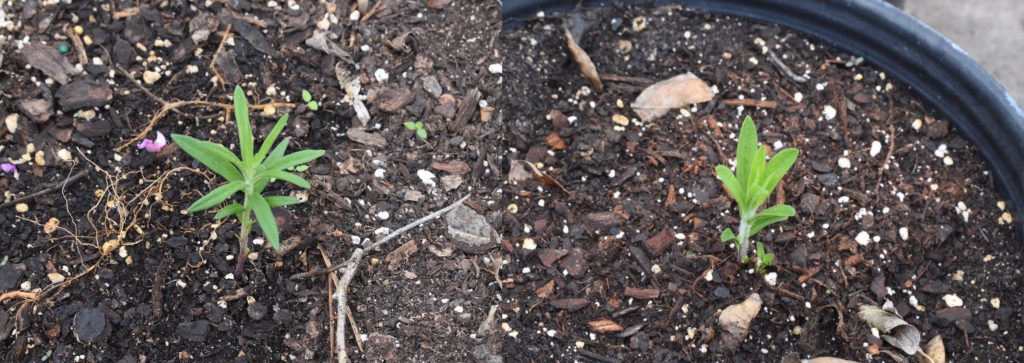

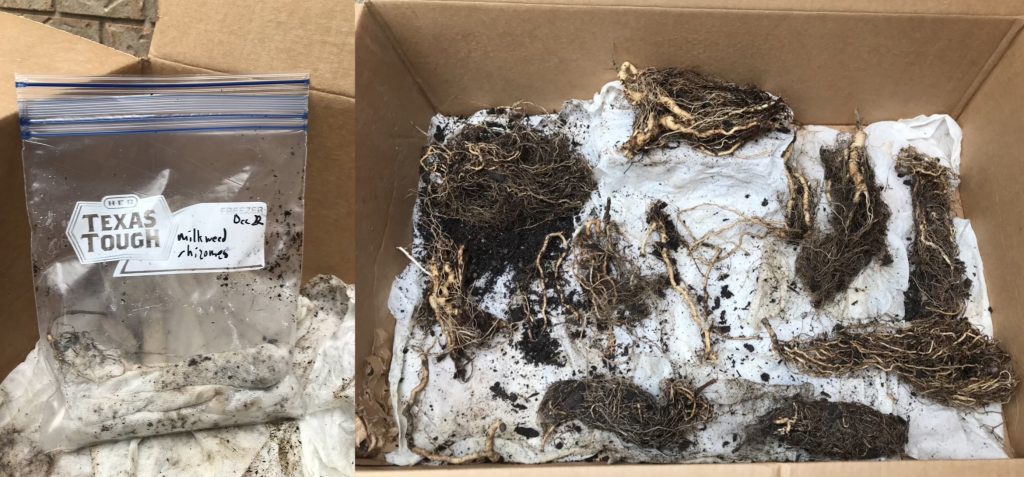
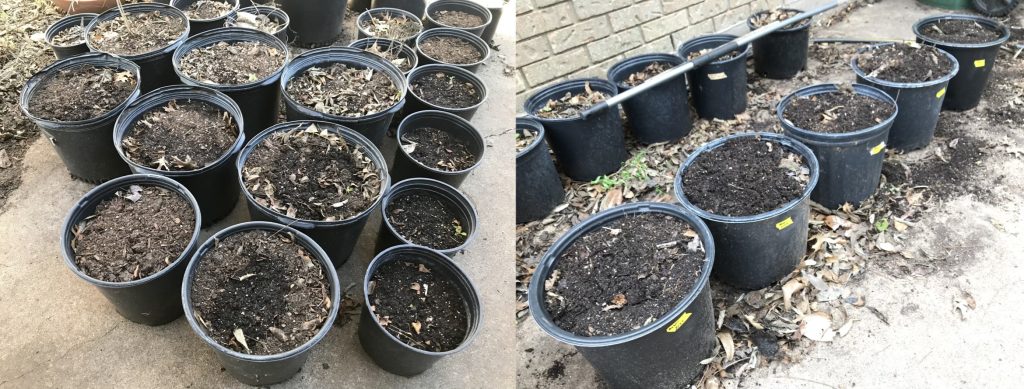






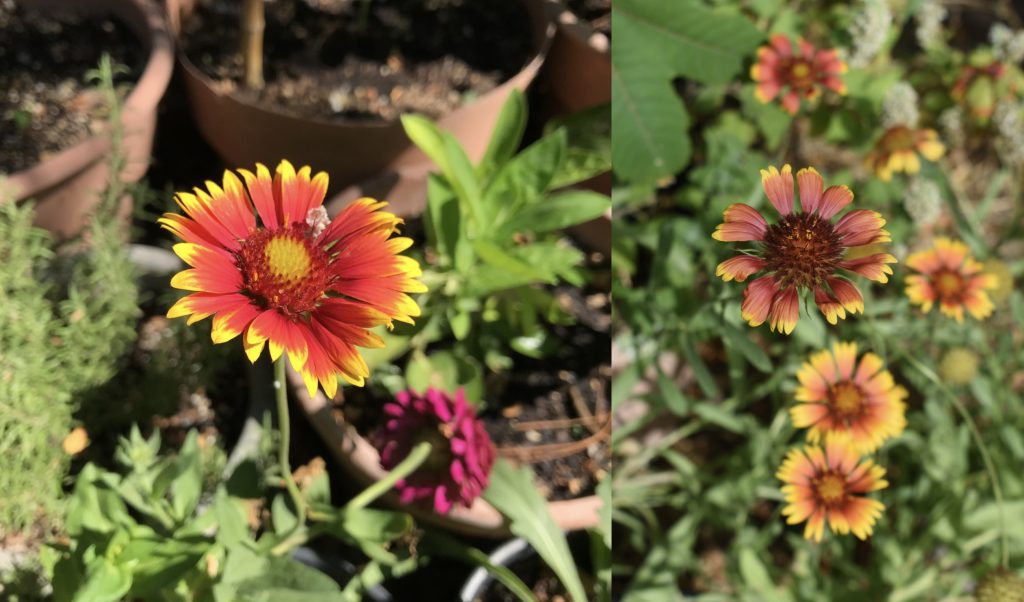



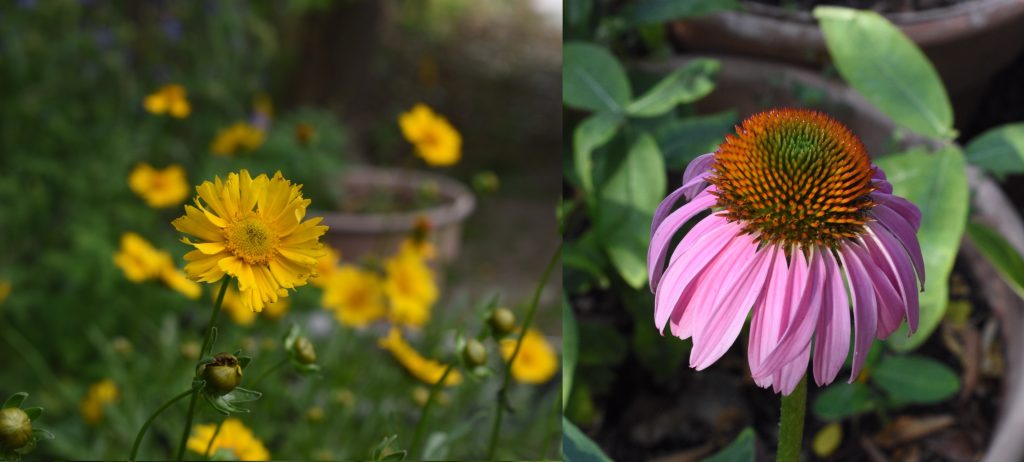

Recent Comments